More people looked at art online in 2020 than physically in 28 years: Ashish Ana
The CEO & MD of DAG on the evolution of the Delhi art gallery and lessons for from the Covid-19 pandemic
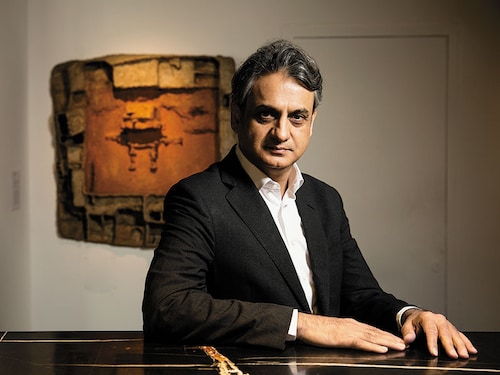

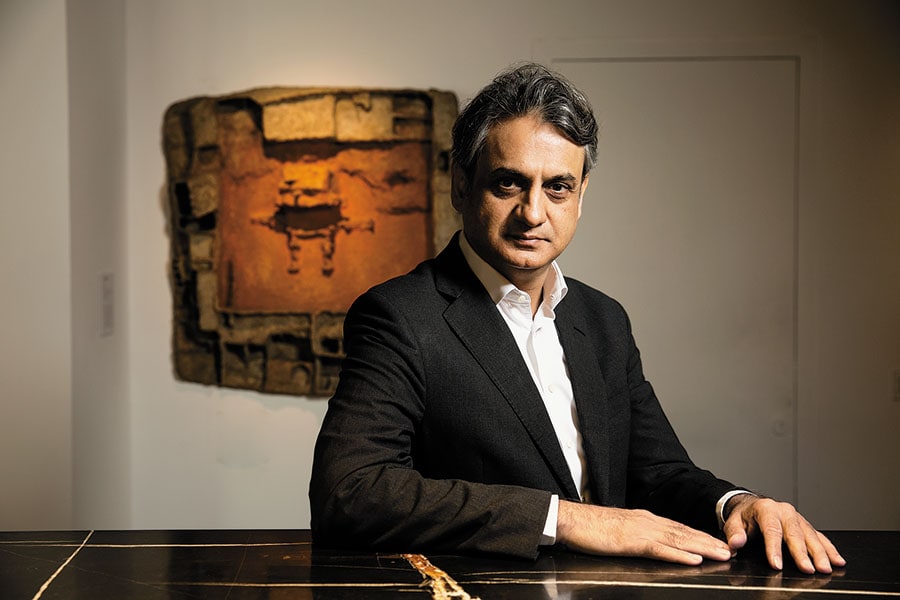 Ashish Anand, CEO and MD of DAG
Ashish Anand, CEO and MD of DAG
Image: Madhu Kapparath[br]Q. How was the DAG started, and what has been its journey over the past 28 years?
DAG (or Delhi Art Gallery, as it was then known) started out in the post-liberalisation era of 1991, when new businesses were taking off and there was a re-found interest in Indian food, fashion, cinema, culture, literature—and art. It was started by my mother Rama Anand, a middle-aged housewife who had an interest in art, as a place where artists—both the young as well as their seniors—might find an interesting place for conversations, to exhibit, and to take forward an art industry that had hitherto been dormant. It was one of the several galleries around the time to open in New Delhi, changing the city’s art scene. Previously, the art market was almost entirely based in Mumbai, and appreciating audiences existed only in Kolkata. DAG, in 1993, and a clutch of galleries completely revolutionised this, and have succeeded in placing New Delhi on a par with Mumbai for its thriving art scene.
In 1996, I joined my mother at DAG and first trained myself and my eye, which has been my most useful tool in making DAG India’s largest art company with galleries in India and New York, museums, international collaborations, several pathbreaking initiatives in the field of art, a pioneer in art publications, and a recognition for the secondary market—previously the domain of auction houses. All this has been made possible by building up, with some foresight as well as through passion, a deep inventory—the largest collection of pre-modern and modern art in India that can simultaneously sustain museums, galleries, participation in international co-events as well as art fairs.
Q. How would you say the art sector in India has developed during this time?
It has been an interesting three decades of witnessing rapid changes in India’s art scene. At its most basic, it has allowed Indians to re-engage with masters whose legacies have now been reclaimed by even the millennial generation. Indians based overseas have become ambassadors and collectors of Indian art. international auction houses have entrenched themselves firmly with an annual calendar devoted to Indian and South Asian sales. A large number of Indian auction houses has proliferated. A very large number of galleries has come up. There are private museums. Collectors are celebrated for their patronage. We now have an annual art fair and a biennale that are touted among the world’s best. Indian artists are increasingly being exhibited overseas.
However, it has not been a smooth ride. The contemporary art market took off but was severely damaged by global recessionary trends. Art funds were launched but were not successful—the result of the recession of 2008—and that has, sadly, scared away investors. The moderns have seen record prices being achieved, even though they are far lower than their European or even Chinese counterparts. Yet, the Indian art market and scene, for all its promise, is still poised at the precipice and has still not got its due on international platforms.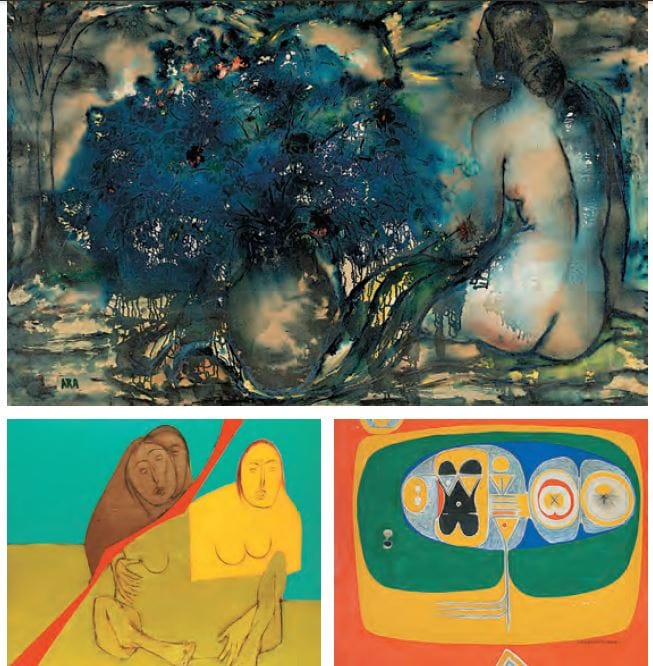 A peek into the DAG collection: (Clockwise from above left) Tyeb Mehta’s Diagonal series 1972 KH Ara’s ‘Nude Lady with flower vase’ and Prabhakar Barwe’s Untitled 1969
A peek into the DAG collection: (Clockwise from above left) Tyeb Mehta’s Diagonal series 1972 KH Ara’s ‘Nude Lady with flower vase’ and Prabhakar Barwe’s Untitled 1969
Image: Courtesy DAG[br]Q. What have been the guiding principles for DAG in building its own art collection?
DAG has been driven by the aim of developing a robust infrastructure for Indian art with vigorous programming that is meant as much to enhance and educate art lovers as to teach them art appreciation.
When DAG started, the art market was limited, and only a handful of artists were spoken about—not more than 10 or 15. With a clear understanding of the richness of Indian art, I travelled a lot, something that I continue to do, and my focus has always been on buying the works of those artists who made a major contribution to the shaping of Indian modernism but were either not promoted or were sidelined due to the disproportionate focus on a few artists. I went wherever my research took me, in search of hidden gems of Indian art that nobody had thought of bringing to the forefront.
Given the richness of Indian art, and given that it hasn’t been given its due enough, DAG has been focusing on taking art to the people. DAG’s long-term perspective of democratisation of art has been at the forefront of most of its activities, whether its historical curatorial exercises, its education initiatives for school and college students, its tactile programming for the non-sighted, its publishing and filmmaking programmes, its lively programming of talks and curated walks, and its relationship-building with institutions and museums around the world.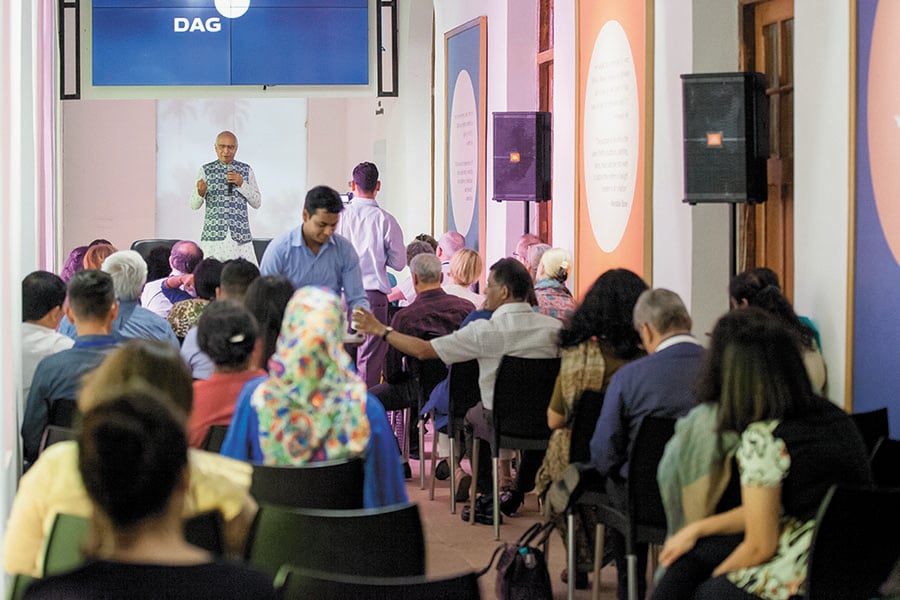 An outreach programme at DAG Delhi to take art to the people
An outreach programme at DAG Delhi to take art to the people
Image: Courtesy DAG[br]Q. With the pandemic adversely affecting most sectors across the world in 2020, how do you see 2021 panning out for the art sector? What do you think will be the main trends?
2020 taught us humility—but not modesty. That is because the art market, after a short hiccup, continued to rise, and several new price benchmarks were established, and galleries and museums switched to the online model with cyber viewing rooms that were a huge hit. The appetite for consumption of art as well as conversations around it boomed—surprising many. We now know that in future the art fraternity will function at a hybrid level—both physically as well as online. If there is one thing I can say for sure, it is that more people looked at art online in 2020 than physically in all the 28 years that DAG has been in existence.
At the core, there will be one consistent journey where our clients—both younger ones as much as mature, experienced collectors—can also engage with us on their phones, on their computers. We need to find newer, fresher models to ensure that people’s interest in art continues to grow and be fed.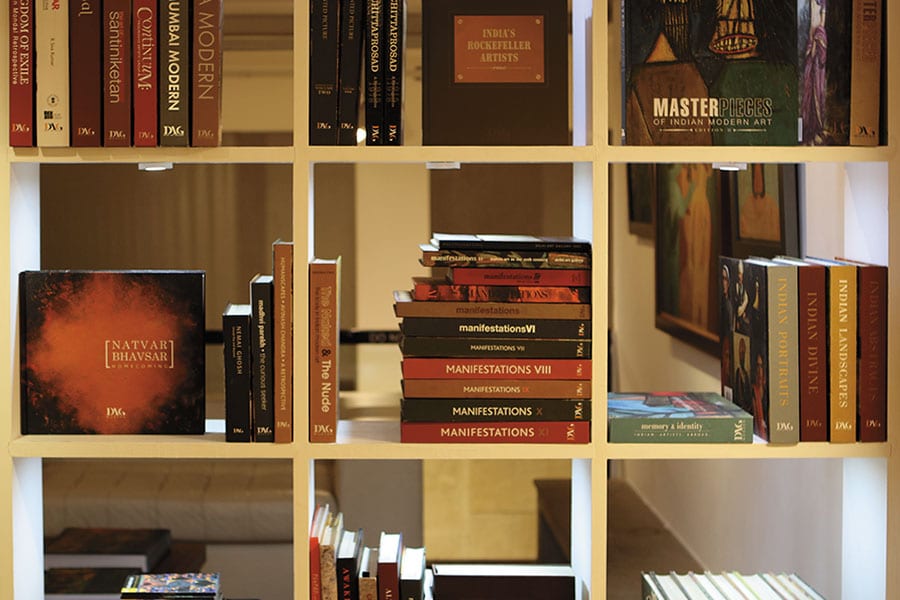 The curated collection of art books by DAG’s robust publication division
The curated collection of art books by DAG’s robust publication division
Image: Courtesy DAG[br]Q. What will be the most important challenges and opportunities in the coming year?
For many of us, getting footfalls and eyeballs into galleries and museums are paramount. No work of art can recreate the same sensation when viewed virtually. That is both a challenge and an opportunity. Already, we are seeing selective footfalls at our galleries, and our museums are only limited to the extent of maintaining social distancing norms. Having learnt that a very large number of people online are interested in art, we wish to become leaders in that space as far as viewing or discussions of Indian art are concerned.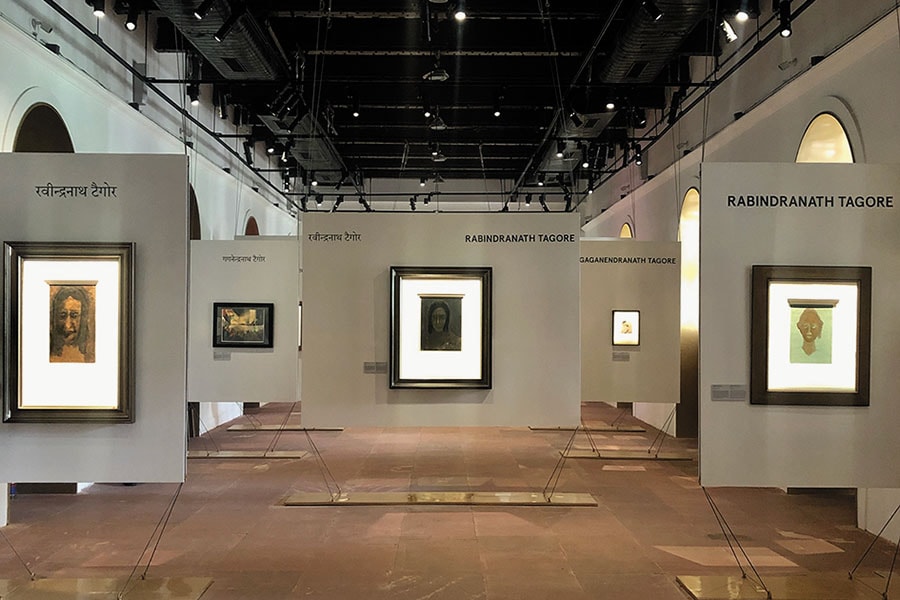 A view of Drishyakala, a museum launched in 2019 by DAG in collaboration with the ASI within the precincts of the Red Fort
A view of Drishyakala, a museum launched in 2019 by DAG in collaboration with the ASI within the precincts of the Red Fort
Image: Courtesy DAG[br]Q. Over the past few years, digital platforms such as immersive websites and social media, have been playing an increasing role in exhibitions and auctions. What will be the importance of these platforms in future?
Make no mistake, they are the future and will open up the experience to millions of people. Social media has now become a business tool. Digital platforms provide instant access to art. As technology revolutionises, we will be able to experience our museums and galleries in real time, perhaps watch artists at work, see exhibitions being mounted, travel virtually to international biennales. We must be prepared to embrace these technologies and offer Indian viewers immersive experiences.
Q. What role do you see DAG playing in the Indian art sector over the next few years?
Over the years, DAG has proved itself a worthwhile leader in showing the way to how art is researched and presented to viewers. We will continue to travel that path innovatively by further and richer explorations of art and its inter-relationship with related forms in the cultural space. Personally, I wish to keep increasing our inventory so that we have enough content to power more museums and alternative art spaces. This comes from ensuring the longevity of art received by us over the past decades and centuries. At DAG, I do not consider us as owners or purveyors of art as much as custodians holding it in safekeeping for future generations.
First Published: Feb 27, 2021, 09:30
Subscribe Now